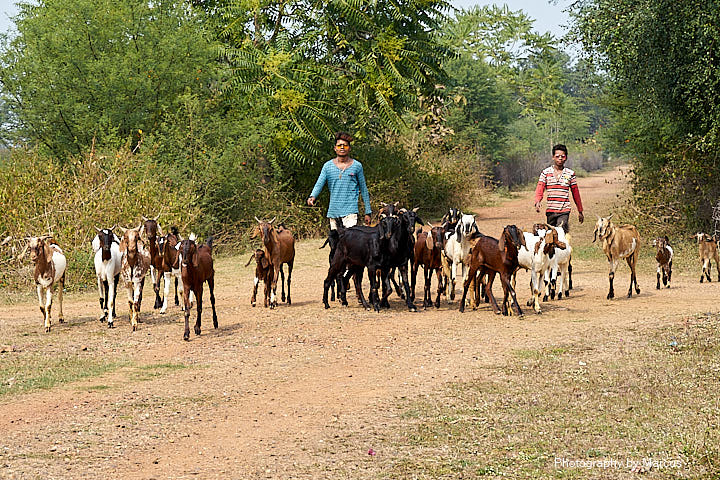
Remember the Basics
The main point about travel is that it aggravates Vata, which represents movement in the physiology and mind. Vata is the Dosha that most easily gets disturbed. When Vata gets out of whack, it commonly causes symptoms like constipation, weak digestion, anxiety and insomnia. See: https://qatoqi.com/ayurveda/blog/balancing-vata-dosha/.
If you’ve spent some time with Ayurveda, you’ve already learned the value of simple things like keeping to a regular daily routine honoring the wisdom of early to bed and arise, responding gently to natural urges, taking the main meal around noon, eating with attention so that you stop when your hunger is satisfied, favoring freshly prepared food, and avoiding ice-cold beverages. All these things help keep Vata in balance. While you may not have embraced it, the keystone to this foundation is Transcendental Meditation twice a day preceded by yoga asanas and pranayama.
It’s another big plus for health to follow a lacto-vegetarian diet. Ayurvedic lacto-vegetarian food is Sattvic and promotes Ojas, which is the source of strength, vitality and immunity. None of this changes when you leave home. Whether you’re going by car, plane or on foot, it’s not that hard to honor these principles. Let’s see how.
In the Air

Try to get comfortable with the idea that it’s OK to make do with the best choice available in whatever situation you find yourself. Air travel can be the most challenging because of time, distance and unfamiliar circumstances. I have a lot of experience with this both good and bad. Early in my career as a physician before learning about Ayurveda, I worked among expatriates in the Middle East for 6 years and made four round-the-world trips. I was able to avoid traveler’s diarrhea by sticking to freshly prepared cooked food and pure water without ice. On the other hand, I suffered more than my share of jetlag. In the process, I learned that it was generally easier to travel westbound due to the extra opportunity for rest with the time change. More importantly, I discovered the benefit of immediately following my home schedule for sleep and meals at the new location and the danger of alcohol. Alcohol lowers immunity (in Ayurvedic terms, it destroys Ojas) and adds another set of potential side-effects to those of the journey.
Fast-forward to the beginning of 2020 when I traveled 36 hours to central India only to return in early March when COVID was first making its global rampage. Remarkably, I suffered neither jet lag nor illness either way. Moreover, I was never troubled while in India despite an outbreak of dysentery at the Ashram where I stayed. The secret to this good fortune was in following my own advice.
A Long Journey

On the first leg of the journey, I did extra meditation and stuck to a light vegetarian diet, eating according to the local time. So, I skipped the late dinner and movies on the outbound flight in favor of closing my eyes to get as much rest as possible. I did my yoga asanas and morning meditation between flights in Europe at an empty gate, followed by a cup of steamed milk with a few Medjool dates I brought with me. I had lunch and dinner on the way to Delhi arriving quite late at night. That’s when things got a little crazy.
I had a 10-hour layover before my final flight. I’d tried unsuccessfully to get advice from friends on how to manage the situation. So, I’d booked an inexpensive hotel near the airport prior to my trip. Sticking my nose outside the international terminal, I was assaulted by the noise, pollution and chaos. I imagined the noise and stink would probably interfere with sleep and quickly abandoned my plans. Back inside, I investigated the hourly sleeping rooms, but found they were full. The staff suggested that there might be space available at the domestic terminal. Since I ultimately had to go there, I calculated I didn’t have much to lose.
After a 30-minute bus ride, I discovered the situation was worse. The bus dropped me at the departures entrance. I couldn’t find arrivals where the rooms supposedly were located. I then tried to check-in early for my flight so I wouldn’t have to keep carting my suitcase around. To my chagrin, a line was already forming at the ticket counter, which was dark and unstaffed even though the competitor was doing brisk business. A couple hours later, I was finally relieved of baggage and clear of security. In the departures lounge the only place to stretch out was the bare, hard floor. There were 6 occupied recliners and some empty, unpadded seats here and there.
By this time, it was about 4 AM. I managed to shut my eyes for a while. When I could no longer tolerate the awkward position, I found a place to do asanas and then meditated until dawn. After some steamed milk and dates, I hung out at my gate. That proved to be the end of the drama. On the flight, I enjoyed a dhokla that I’d pre-ordered along with some hot water. The rest of the journey to the ashram was smooth. I arrived in time for a nourishing, albeit late lunch. In the end, I felt fine.
The Moral of the Story
Of course, I could have done better if I had been willing to fork out the money for a first-class hotel room. I tell this story not to dramatize my foolishness but to illustrate that when travelling by air, you’re more exposed to the unexpected. The best plans can go awry, but you can still stay balanced. My neighbors recently got stuck in Miami due to repeated airline cancellations on their return from a wonderful holiday in the Bahamas. They ultimately capitulated and drove a rental car back to Chapel Hill. You likely have your own stories. Accept the risk or don’t go. Take a little healthful “just-in-case” snack food with you and whatever else you might need to ensure the minimum acceptable amount of comfort. Otherwise, follow the Ayurveda basics as best you can.
On the Road

When traveling by car, you generally have the option to take whatever you think you might need or want. You have more cargo capacity than when flying and are free of the restrictions in carrying liquids. So, for a day trip, you could prepare a meal to take in a wide-mouth thermos as when going to the office (see: https://qatoqi.com/ayurveda/blog/quick-and-easy-ayurvedic-meal-preparation/). Alternatively, you could take some wholesome stuff as backup (e.g., oatmeal cookies, grapes, avocado) and look for an Asian, Mediterranean or Mexican restaurant. Some of the newer chains like Panera and First Watch offer better fare than the old ones like Denny’s. Many feature decent vegetarian soups and sandwiches. College towns are even more vegetarian friendly. Otherwise, you might be able to get the restaurant to accommodate you, for example, by cooking the vegetables well done or sauteing the salad in a little olive oil.
On the road or off, you’ll sometimes have to accept a compromise. If it’s only once and a while, it’s not a big deal. For example, I treated my best friend to lunch at a local restaurant for her birthday. It was one of her favorites, but not mine. I settled for a veggie burger with sweet potato fries. We shared some edamame. I also shared some of her dessert (chocolate mousse cake) which astonished her because I rarely if ever do chocolate much less a mousse made with eggs). It was lunchtime when digestion is strongest. It didn’t kill me.
Off the Beaten Path

The strategy for living Ayurveda in the backcountry depends on the nature of the trip and its duration. Trailer camping, horseback and canoe offer potential for fresh food and some of the comforts of home. Backpacking and climbing are another story.
Hiking
In my youth, I did a lot of backpacking in the Olympic and Cascade mountains of Washington state. They were often trips of 5-10 days that had to be carefully planned to control load weight. These were not Himalayan treks with porters, guides and fresh food. We did freeze-dried entrees and our own trail mix. If that’s your game, it won’t be much different. You’ll just have more to choose from.
Climbing
While in medical school in Colorado, I climbed a few 14,000 foot peaks. These were weekend trips, making some fresh food a possibility. Even so, other constraints applied. We wanted to travel light to the summit by mid-day. That meant reliance on trail snacks and hydration. Also, considering that high altitude suppresses appetite, this was about as good as it could get. We sometimes left a cache at the base camp, which had to allow for bears and other critters, including human thieves.
Day Trips
For less ambitious day trips and shorter outings, your body’s fat and glycogen stores will provide adequate “fuel” for the workout, as long as you stay hydrated. You need to eat because your body’s conditioned to the routine and because the body will begin to digest its own tissues if you skip lunch. So, it’s of value to maintain your normal eating schedule and provide for a few healthy snacks—according to hunger, allowing for the prior meal to be digested. If your objectives permit, it would be good to stop for a decent, cooked lunch and a rest. Do take some time after eating to ease back into activity. Heavy exertion after a normal lunch would not be comfortable.
You could prepare suitable food ahead and take it in a wide mouth thermos, like for a road trip. The extra weight will just add to your workout! Snacks could include some fruit or even an energy bar—preferably including figs, raisins or dates, and excluding peanuts, added sugar and chocolate. Commercial trail mix can be more problematic due to dryness, salt, peanuts and/or almond skins—but that could be managed by making your own. The other thing is that warm liquids are better than the uninsulated water bottle except in summer. Again, the trade-off is weight for comfort. You could even take boiled milk for a snack and lassi for lunch. It all depends on how far you’re willing to go in preparation and how much you can carry on the trail.
The Take-Away
Ayurveda’s basic guidelines for health are portable. By honoring them, you can travel comfortably without falling ill. Do the best you can as circumstances permit. Perfection is not required.
Keep in mind that the things we do for enjoyment should bring joy, not pain and suffering. The wise seek a balance between their ambitions and their capabilities. Exhaustion depletes Ojas and aggravates Vata. There’s no fitness and little joy gained from it.
The things we do out of obligation come with different trade-offs. Each situation needs thoughtful evaluation. Short-term, there may be much gained from personal sacrifice for sake of Dharma. We have all done this to support those we love. The main concern is sustainability. If we ignore our own basic needs in the process, we risk a breakdown from illness. In crossing that limit, we’ll likely fail the overall mission. What good is that?
Products
Without proper diet and daily routine, medicines are of little benefit. So, I’d recommend you focus on the above suggestions. There are a few items, however, that help to balance Vata and that may be useful, including Vata Tea, Worry Free aroma oil, and Worry Free or Stress Free Emotions tablets. The Mino aroma diffuser runs on USB power and can be placed in a cupholder in your car. With these links, you will receive a 20% discount from MAPI. I will receive a 20% commission. If the discount doesn’t appear, manually enter the code AYURVEDACONSULTATIONS at checkout.
Comment Below
Continue the conversation. Please share your experiences and questions.
Thank you for the recommendations! My best tipp is to always carry some hot water in a thermos bottle. It’s so soothing and helps me control Vata when travelling. Why are almond skins bad?
Dear Vera–Thank you for sharing your experience. Almond skins are considered mildly toxic, perhaps because they are so hard to digest. Taken occasionally in small amounts, this would not be a big deal; whereas, if consumed frequently, blanched almonds would be a better choice. In general, nuts should be soaked in water or lightly roasted before eating. If you soak almonds overnight, you can easily rub off the skins. Peanuts, in contrast, are highly Tamasic (dulling to the nervous system) and tend to clog the channels of the body. They are best avoided.